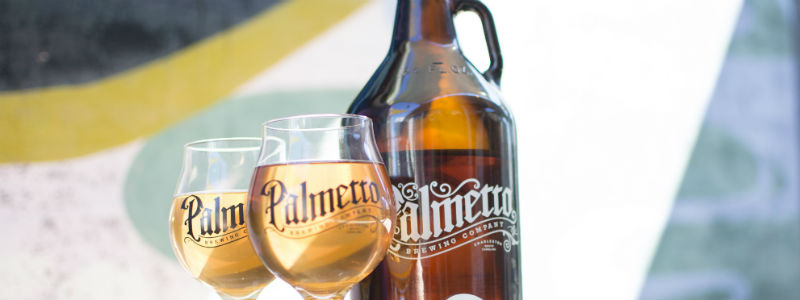
As craft breweries continue to fight for consumer mindshare and shelf space with worries of consolidation within the industry from larger beverage companies, and price pressures, especially on grocery shelves, it makes breweries look for strategic opportunities going forward.
A mid-sized veteran brewery like Catawba Brewing has been on an upward climb over the last five years. With CEO Billy Pyatt, the brewery has made a forward-thinking decision to grow the North Carolina brewery with the purchase of South Carolina’s Palmetto Brewing, also a well-established southeastern brand that has grown rapidly in volume recently.
“We will have more scale and scope and that is important to suppliers, distributors and key retailers,” Pyatt said to Brewer Magazine. “We will have another taproom for us to expose our beer to a new batch of consumers in Charleston. … We are getting wonderful people in the deal. I’m tickled to death.”
Upon finalization, which is expected by the end of 2017, Pyatt said Catawba will immediately implement a $1 million capital investment plan for the Morganton and Charleston facilities. It will includes facility upgrades, equipment purchases and personnel.
“We don’t have all the answers, but we do come with a business background in our family and hopefully we can analyze data and trends and make some good decisions and manage properly,” Pyatt said. “It’s still a romantic industry, you can get two or three folks together with an idea, some knowledge of small-scale brewing and they can create something that is absolutely wonderful, and that can still be done here. What’s harder is getting into regional distribution.
“You have to be a business person that understands logistics and cost-focused quality control, and brand focus to make that play.
Pyatt ventures every craft brewery owner sees struggles every 3-5,000 barrels as a good break point in growth.
“From 1,000 to 2,500 I thought it was tough to grow,” he said, “but we didn’t take a break.
“The steps don’t get any easier and they become more expensive. Moving from 10-20,000 barrels up to 50,000 is expensive and it requires capital and people. And for some people, their affinity for that level of business and discipline just isn’t there.
“I do feel there is room for people that want to maintain 15,000 barrels and less. It can be a good business if it is managed well and you know what you are doing. For others with maybe different aspirations or like us, an exuberance for what beer in the Southeast is going toward, it makes sense to us for us to do it [grow past that level].”
Larry Lipov, the current owner of Palmetto, met with Pyatt more than a year ago through a mutual friend and informal discussions began.
“The more we talked, the more we decided that he decided he wanted to focus on other things in his life and he said if we were willing to take this on, it would be the right home for the company,” Pyatt said. “We want to make everyone better. It was that level of conversation, not one where we were fighting over dollars and dimes. It was making sure the culture and the brands were well protected. Palmetto is older than us (opened in 1993) and we have established brands that have grown lately. I think to be true to the company we want to be true to both brands.”
Catawba, which opened in 1999 and is expected to finish up 57 percent in volume from its 2016 production of 11,200 barrels to around 17,500 bbl, will take over operations and branding of Palmetto, which is on a similar growth spurt — expecting to finish up more than 5,500 bbls more than 2016 at around 16,000 bbls. Catawba, which employs what Pyatt calls a hybrid retail/wholesale business plan where the brewery has multiple locations across North Carolina with a production facility in Morganton; a 7-bbl brewhouse in Asheville; and a open ferment 10-bbl brewhouse in Charlotte. All also have taprooms and share beers amongst the breweries for consumers across a five-state region.
About 90 percent of distribution is the same in the states the breweries share, but there are a couple area where there will need to be some discussions to best rationalize what happens long term for the brands, Pyatt said.
“We want to do all the right things for all the right people,” he said.







1 Trackback / Pingback